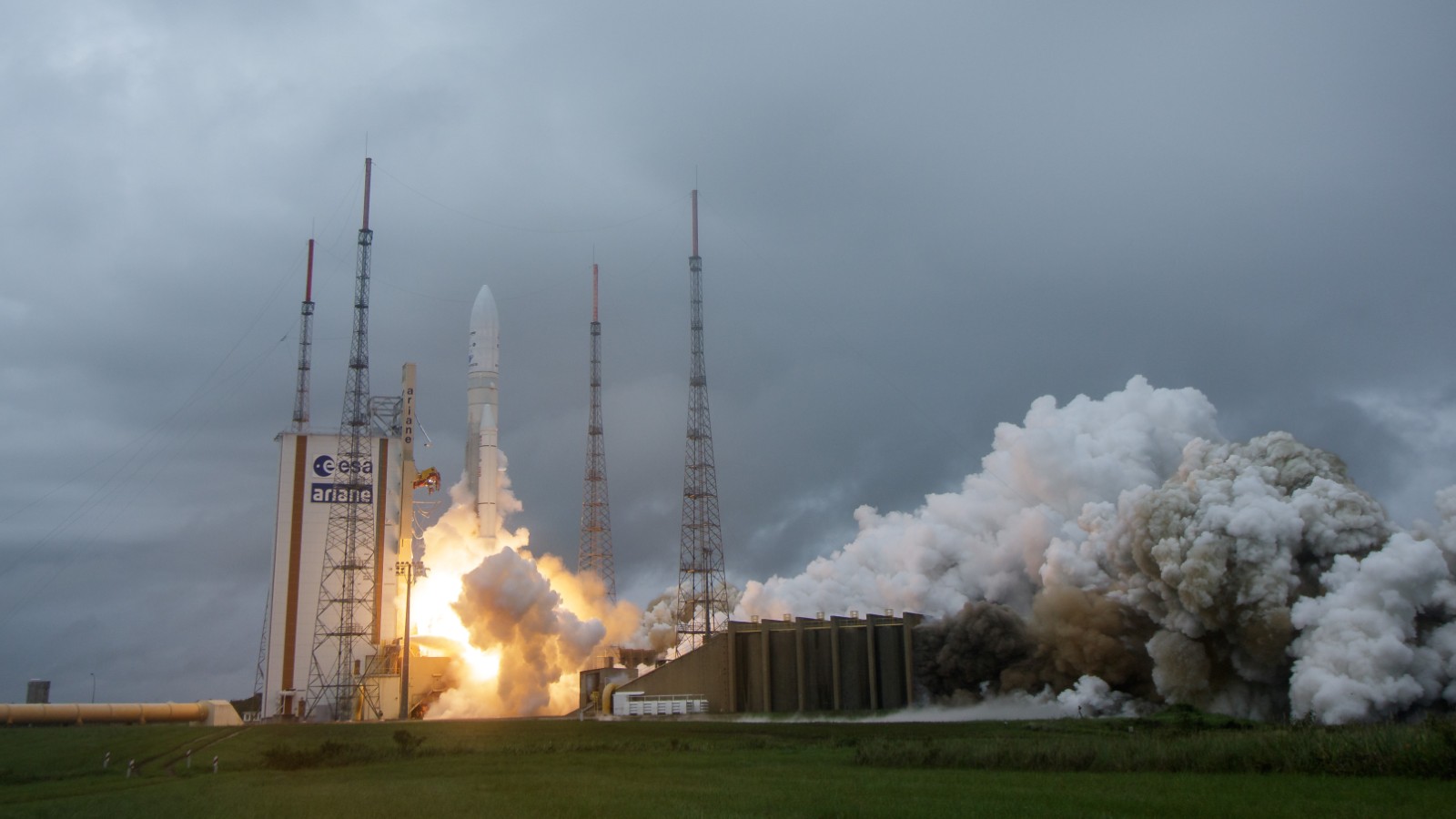On Christmas Day, 2021, an Ariane 5 rocket leaped from its launch pad in French Guiana. Perched on the rocket’s nose was the long-awaited James Webb Space Telescope (JWST). The JWST was designed to perform several tasks, but one of the most important was to study the first stars and galaxies to come into existence. The telescope has performed magnificently; however, some troubling observations have been reported.
When the JWST took its first look at the sky, it seemed to have found galaxies completely unexplained by accepted theory. Astronomers worried that our understanding of the Universe’s early moments was fatally flawed and cosmology broken. Some press reports even hinted that the Big Bang was wrong.
However, a new paper published in Physical Review Letters strongly suggests that the discrepancy was not in our understanding of the cosmos’ evolution but in how early stars formed.
Astronomers have long thought they understood how galaxies evolved. First, relatively small clusters of stars formed. These clusters then gathered together to produce baby galaxies. The baby galaxies then coalesced into the giant galaxies we see today. This process, from the first stars to near-mature galaxies, was expected to take about a billion years.

Because our Universe is about 14 billion years old, we needed a facility that could peer back in time and gather the data necessary to validate this theory. That’s where the JWST came in.
The space telescope was designed to detect infrared light, with good performance in the wavelength range of 0.6 to 28.5 micrometers. This wavelength is quite long and not at all representative of the light emitted by early stars. Indeed, the early stars were immensely hot and emitted ultraviolet and blue light, which is well outside what the JWST can see.
However, as the Universe expanded over the eons, the wavelength of light traveling through it stretched, turning the white-hot light of early stars into an invisible infrared.
Just a couple of weeks after the JWST began operations, astronomers detected a large, bright galaxy originally thought to have existed a mere 250 million years after the Universe began. The name of this galaxy is CEERS-93316. Standard theory predicted that such a galaxy was impossible. Follow-on observations detected other well-developed galaxies, although none so early as CEERS-93316.
Determining the age of ancient galaxies requires a detailed measurement of the spectrum of light the galaxy emits, and the first observations did not use the most precise instruments to determine CEERS-93316’s spectrum. After using better instruments, astronomers found that CEERS-93316 was not as old as they initially thought, which caused some relief in the astronomical community.
However, the age of the other large and almost-as-old galaxies was validated by further analysis. The existence of well-developed galaxies so early in the Universe’s history continued to challenge accepted astronomical theory, and scientists began to consider whether our understanding of the early eras of cosmic history needed revisions.
The new paper suggests that a different explanation is necessary. The authors compared JWST data with data taken earlier by the venerable Hubble Space Telescope (HST). The HST could see a much-reduced portion of the infrared spectrum but with sufficient overlap to compare the results from both telescopes.
If the answer to the question of what appears to be large and bright early galaxies in the JWST data involves modifying the theory of galaxy formation, then researchers should expect to see a corresponding change in HST data. However, the HST observations strongly disfavor any changes in the theory.
Subscribe for counterintuitive, surprising, and impactful stories delivered to your inbox every Thursday
What then could explain the JWST observations? Astronomers have developed an alternative explanation. Rather than create a new theory of cosmic evolution, some researchers have suggested that the presence of gigantic early stars could explain the observation of unexpectedly bright early galaxies.
Stars in the modern era tend to be comparable in mass to our Sun. However, these researchers postulate that stars in the early Universe could be a hundred times the mass of the Sun. Such massive stars would be extremely bright, and relatively few bright early stars would look much like many more modern stars. This could explain the reports of early massive galaxies.

Another possible solution involves the mechanism whereby hydrogen and helium gas clouds become stars. In the modern day, these clouds form stars with a well-known probability. If astronomers see a certain amount of star formation in a recent galaxy, they can estimate the amount of hydrogen gas in the galaxy and determine its mass.
However, perhaps in the early Universe, star formation was more efficient, and it proved easier for clouds to become stars. If that were true, then observations of early star formation would lead astronomers to estimate that the gas clouds in early galaxies were larger than they actually were. The result would be that scientists were fooled into thinking that early galaxies were larger than reality.
While the answer to the JWST’s observation of bright early galaxies is not yet known, it appears likely that the mechanisms of star formation in early galaxies differed from the modern day. If so, this means that there is no need to try to modify our understanding of the formation of galaxies in the early Universe. The reports that the Big Bang theory was wrong are entirely premature.
